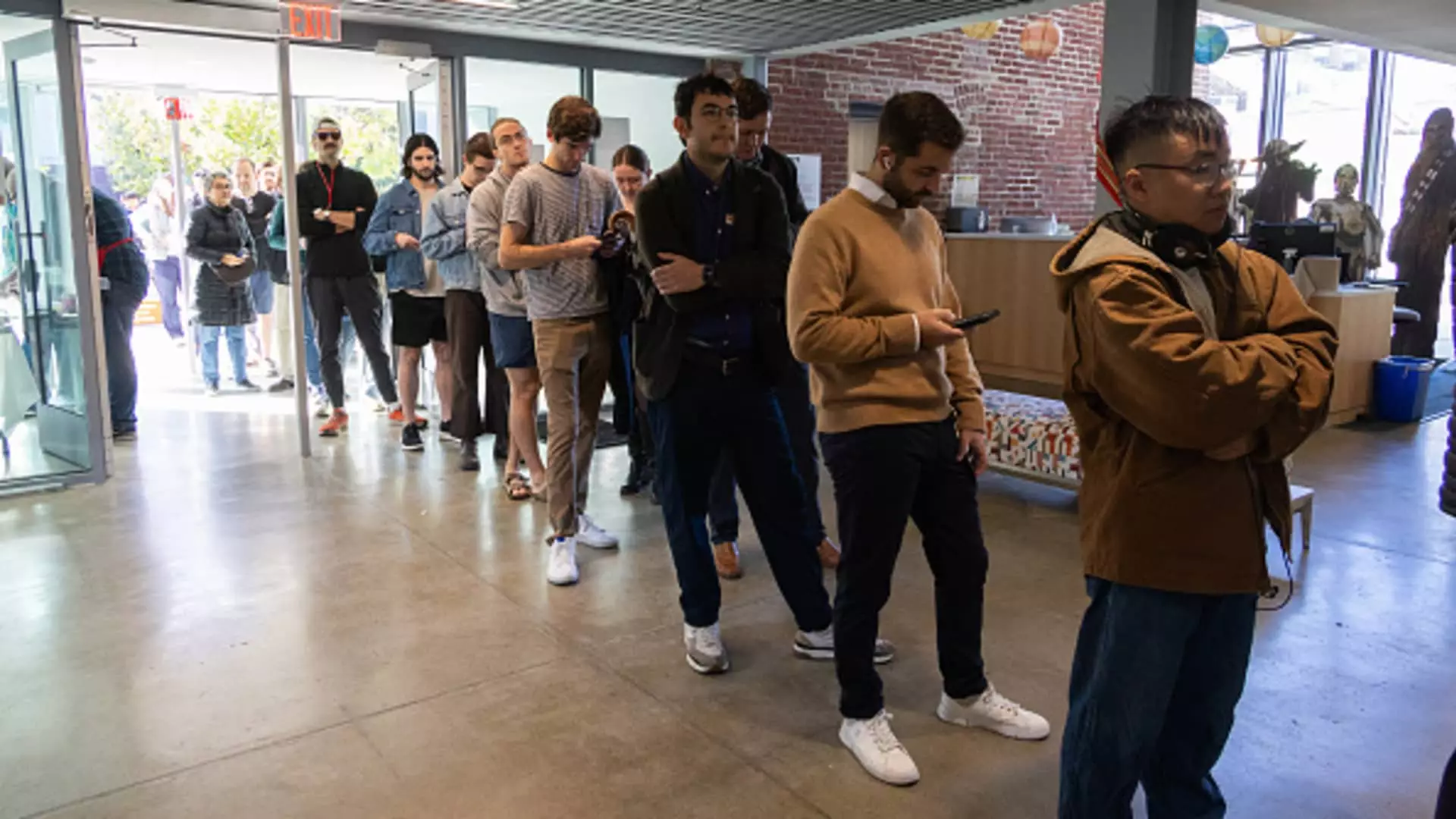The 2024 U.S. elections revealed stark contradictions and illuminating divides within the electorate, notably along gender lines. The divergence in voting patterns between men and women illustrates deeper socio-economic concerns, educational disparities, and shifting priorities. These nuances go beyond mere numbers; they encapsulate the evolving landscape of American life in an era marked by unprecedented change.
The 2024 election saw Vice President Kamala Harris draw substantial support from women voters, edging out President-elect Donald Trump by an 8-point margin. Conversely, Trump’s advantage among male voters was pronounced, as he captured 55% of their support compared to Harris’s 42%, resulting in a sizable 21-point gender gap. This stark contrast underscores not only differing political allegiances but also highlights the unique socio-economic narratives that shape the perspectives of men and women in contemporary America.
While the immediate impulse might be to attribute these trends solely to educational disparities, they are intricately linked to broader economic anxieties. Male voters expressed overwhelming concern for their financial futures, a sentiment echoed in exit polls which suggested this demographic felt a strong connection between their economic realities and electoral outcomes. Trump’s robust appeal to men can be tied to perceptions of economic resilience and opportunity, particularly as inflation remains a pressing issue for many households.
Inflation, currently an overarching concern among the electorate, has substantially influenced voter behavior. The economic discourse propagated by the Trump campaign resonated powerfully with demographic groups experiencing tangible anxiety about their financial futures. The attention to economic mobility and employment prospects played a central role in shaping the opinions of younger men, many of whom feel increasingly disenchanted with the job market. The sentiment that pathways to economic progress are narrowing plays a crucial role in the political allegiances within this group.
Julia Pollak, chief economist at ZipRecruiter, emphasized the growing disillusionment among men, especially those aged 25 to 54—traditional working years. It’s undeniable that this demographic experiences heightened levels of economic uncertainty, spurred by declining participation rates in the workforce. The Pew Research Center reports that a significant number of non-college-educated men are exiting the labor force, shifting dynamics that illustrate a substantial decline in long-standing blue-collar employment opportunities.
The educational landscape also tells a compelling story, particularly regarding the gender gap in college attainment. Women are outpacing men in education, with 47% of women aged 25 to 34 holding a bachelor’s degree compared to 37% of their male counterparts. This growing divide underscores the shifts in societal expectations and the pathways available to young Americans. The prevailing narrative champions four-year degrees as essential, often sidelining vocational training, which has historically served as a route to stable employment for many men.
Empirical evidence indicates that this educational divide might perpetuate further socio-economic inequalities. As men withdraw from educational pursuits while women’s participation surges, a disconnect manifests, challenging traditional economic roles. The changing landscape not only affects individual career trajectories but also the larger narrative around gender roles within society. As female participation in the workforce rises, with women increasingly prioritizing their careers over family life, the implications for future political mobilization and advocacy become apparent.
Despite the significant mobilization of women voters toward Harris, traditional concerns surrounding reproductive rights did not propel a dramatic increase in turnout. While the potential implications of abortion rights ostensibly influenced the election’s narrative, broader socio-economic issues, including paid leave and affordable housing, appear to resonate more deeply among women voters. Organizations advocating for women’s rights emphasize that, though reproductive rights are crucial, they are part of a larger tapestry of issues that encompass women’s lives.
In this complex milieu, Fatima Goss Graves, president of the National Women’s Law Center Action Fund, aptly noted that the pain associated with economic distress is tangible. The advocacy landscape for women’s rights must therefore expand its focus beyond single-issue politics and encompass a more holistic understanding of how economic factors intertwine with personal choices, particularly in the context of child care and equal pay.
As we analyze the data emerging from the latest election, it is critical to approach these findings with a nuanced lens. The gender divide in voting reflects more than just political preferences; it signals shifting economic realities and evolving social dynamics. As women continue to close the educational gap while also confronting challenges tied to family planning and career ambitions, the political landscape will likely adapt to accommodate these changes.
The 2024 election serves as a compass illuminating the intricate relationship between gender, economics, and political allegiance in America. As society grapples with these pressing issues, the urgency for inclusive policies that resonate across gender and socio-economic lines becomes apparent. The path forward requires recognizing and addressing the diverse needs of all voters to foster a more equitable and just political environment.

Leave a Reply